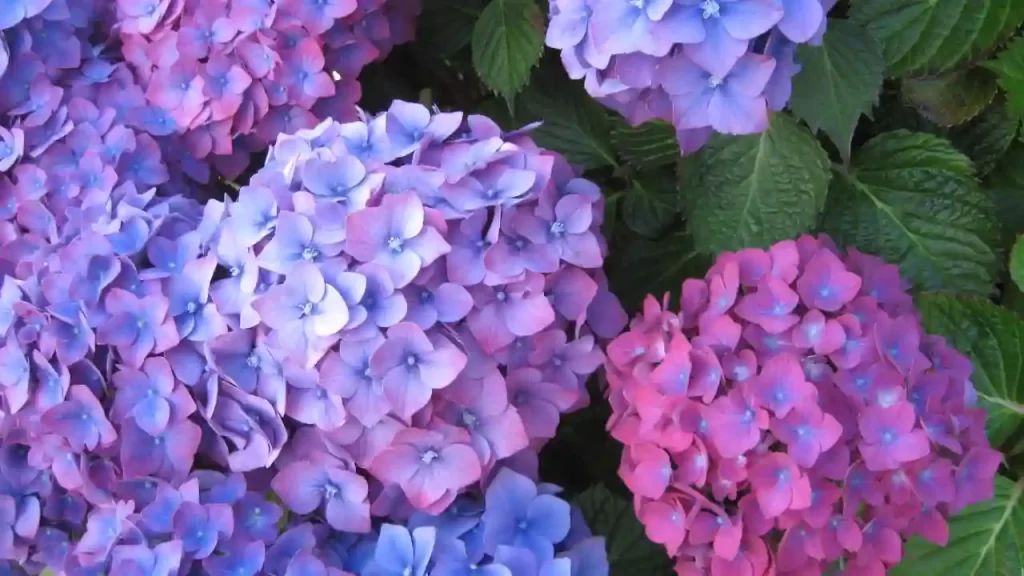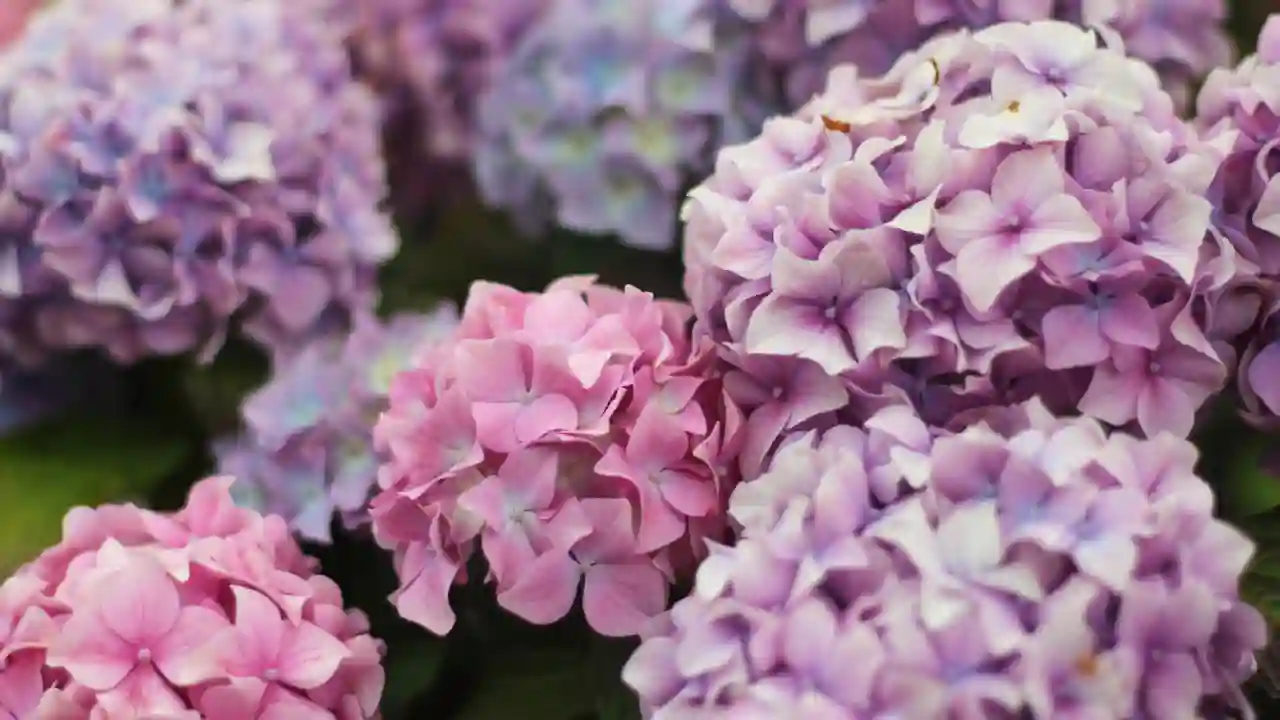Hydrangeas, or Hydrangea spp., belong to the Hydrangeaceae family, which mostly includes wood shrubs and climbers. These varieties are often used as garden ornamentals as they’re often resilient and give out gorgeous blooms.
Gardeners, homeowners, and florists everywhere appreciate the beauty of hydrangeas. If you’re planning on decorating your garden with these flowers, you must be wondering, how much sun do hydrangeas need?
On average hydrangeas need four hours of direct sun per day. There are some varieties that benefit from long exposures of up to six hours. And contrary to that, other varieties were cultivated as shade-loving plants. A few hours in partial shade per day is all that they need.
Do Hydrangeas Need Full or Partial Sun?

Hydrangeas are easygoing strappy plants that can survive in various conditions. They thrive equally well in hardiness zone 5 as in zone 10, which shows how resilient these flowers are. Additionally, they grow quite nicely in partial shade and in full sun.
Interestingly, they can also spread their roots in any type of soil. Even the soil pH; the hydrangeas can still adapt to it. It’s worth mentioning here that the degree of acidity or alkalinity would affect the color of the bloom.
With proper care routines, some hydrangeas can grow into 15 feet tall shrubs. They would gain around 2 feet per season, which changes your garden’s landscape in a very short time. There are many uses for these amazing plants, and you can plant them easily all-around your house.
The most important thing is to plant hydrangeas in a well-draining medium. This would protect the plant from root rot and many other pests that live in constant moisture.
There are about 23 different species of hydrangea, and most of them are sun-loving plants. However, some of the cultivated variants can take to locations that are partially sunny, or even shady.
So, the question arises, how many hours of sun do hydrangeas need? In general, hydrangeas need about 4 hours of the full morning sun. Extending that to six hours can be an extra bonus to some hydrangeas, like the Pinky Winky or the LimeLight hydrangea.
Do Hydrangeas Prefer Full Direct Sun?

The majority of hydrangeas would do better in partial shade, or in locations that only get morning sun, than in full sun areas.
Some varieties of hydrangeas, like the panicle hydrangea, are known for their affinity for a bit more light. They often bloom and thrive better in open flowerbeds, where the sun is present for a good six hours of the day.
This isn’t the rule though, but more like the exception. And even then, these hydrangeas often need more frequent watering to keep them from getting dry and dehydrated.
Additionally, in Southern states, these hydrangea paniculata might need some cover from the harsh sun around noon.
Can Hydrangeas Grow in the Shade?

Excessive shade might not stunt the growth of hydrangea, but it would most probably reduce the frequency of hydrangeas bloom. It might also affect the size of the flowers.
Partial shade is often a better choice, as the filtered light encourages the hydrangeas to put out fuller and healthier blooms.
It also gives them enough protection from the harsh sun in some states. Thus, planting them under trees, or in the shade of a fence, would be an optimal place.
Most hydrangea variants would be quite happy in partial shade. Among these are oakleaf hydrangea, snow queen hydrangea, and Annabelle hydrangea,
Where Is the Best Place to Plant a Hydrangea?
Most hydrangea species favor partial shade over the full sun or total shade. Even the sun-loving variants still do well in indirect light.
Filtered sunlight seems to provide these plants with the right amount of energy while keeping the hydrangeas safe from burning or dehydration under the full sun.
Hydrangeas are often used for decorative uses, and as such, they can be planted on the sides of houses, under pergolas, on decks, and inside patios.
The climber varieties can be encouraged to grow on walls, columns, or even tree trunks.
The hydrangea types that can take a bit more sun, can be planted around flower beds, or on the perimeter of fences. They can also form a decorative backdrop for other plants.
Can Hydrangeas Grow as Indoor House Plants?
Garden hydrangeas grow nicely in partial shade, which tempts many owners to move them inside the house.
This transition works well if the plants are still young, or have been planted recently in that spot. That’s because hydrangeas grow their roots deep into the ground and often take to the spot they’re in rather quickly.
A better option is to buy hydrangeas from a nursery or a nearby greenhouse. You can then move them into large-sized pots with a suitable potting mix.
Hydrangeas are usually satisfied with partial shade in the garden, but that doesn’t apply to the house. You’d need to look for a bright spot beside a window for them to get sufficient light exposure.
In winter, or if the house doesn’t have enough light, artificial grow lights might be necessary to sustain the hydrangeas needs. The intensity of the grow lights should be low to moderate depending on the surrounding natural light.
Where Do Hydrangeas Come From?
Hydrangeas are native to most parts of the Western Hemisphere. They can be found in Europe, the Americas, plus, the Eastern parts of Africa and Asia.
The various climatic conditions in each one of these locations haven’t stopped the hydrangeas from thriving and spreading.
Depending on the soil pH, hydrangeas give out gorgeous vividly colored flowers.
A more acidic soil tends to induce pink and red blooms, while an alkaline medium is likely to produce blue and purple hydrangea flowers.
Conclusion – How Much Sun Does Hydrangea need?
Hydrangeas are absolutely amazing flowers that brighten up any place they’re planted in. They’re not just pretty decorative plants though, these flowers are also quite hardy and resilient.
Whether you’re living in a cool cloudy town, or in a hot sunny city, hydrangeas would be in full bloom. That’s why they’re so popular among gardeners and homeowners.
Frequently Asked Questions
Are there any hydrangeas that like full sun?
Panicle hydrangeas can be in the direct sunlight for whole day yet bloom well. However, other hydrangeas requires only the morning sunlight. They can even do well in partial sun.
How much shade can a hydrangea tolerate?
Almost all hydrangeas need sun to bloom fine. The amount of sun hours can vary depending on the type of hydrangea and the climate. Hydrangea like panicle can require full sun while others need 4-5 hours of morning sunlight.
Do hydrangeas stay green all year?
Most hydrangeas are perennial and shed their leaves every year. However, there is one hydrangeas namely Evergreen Hydrangeas that remain green whole year.
